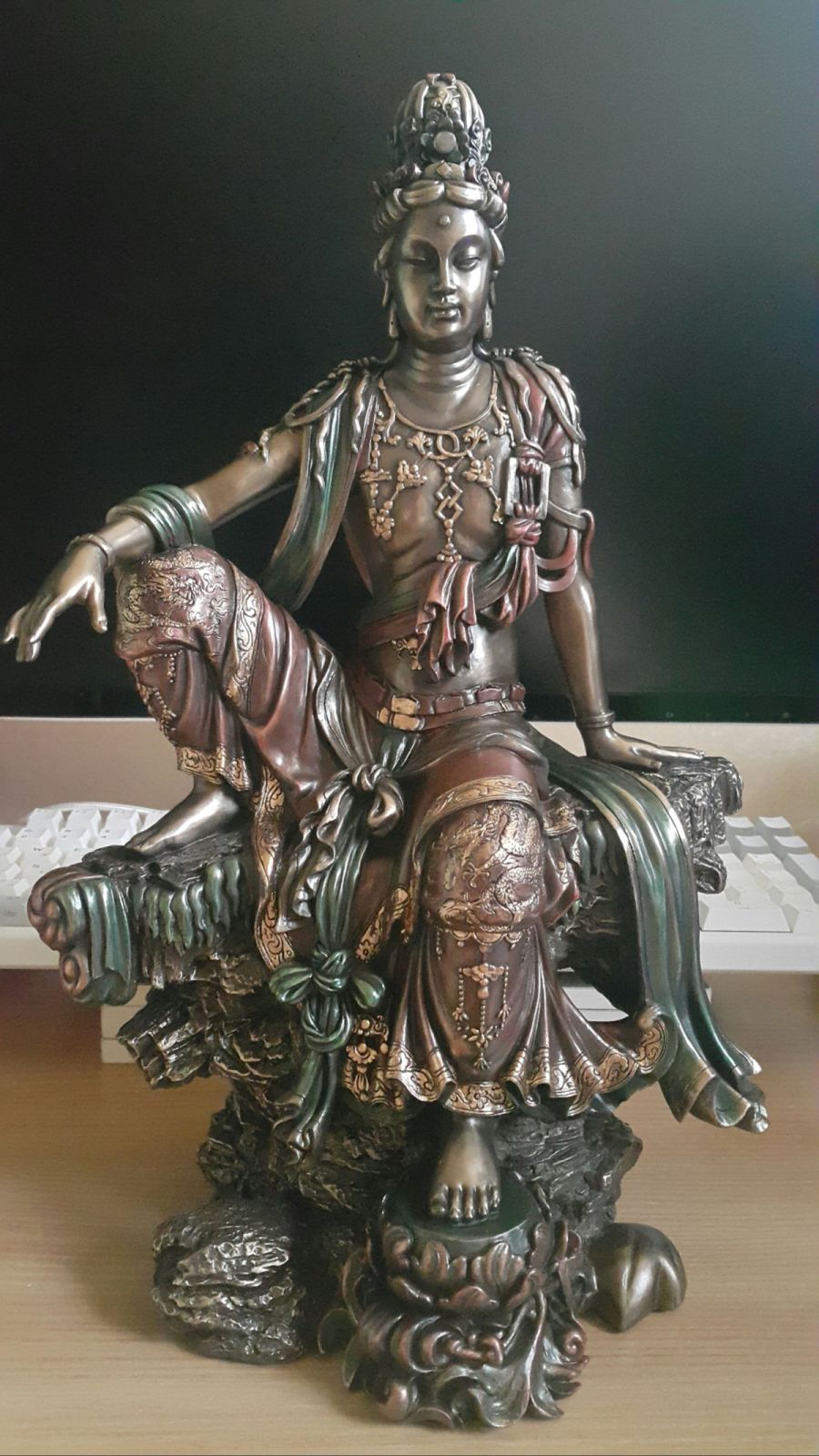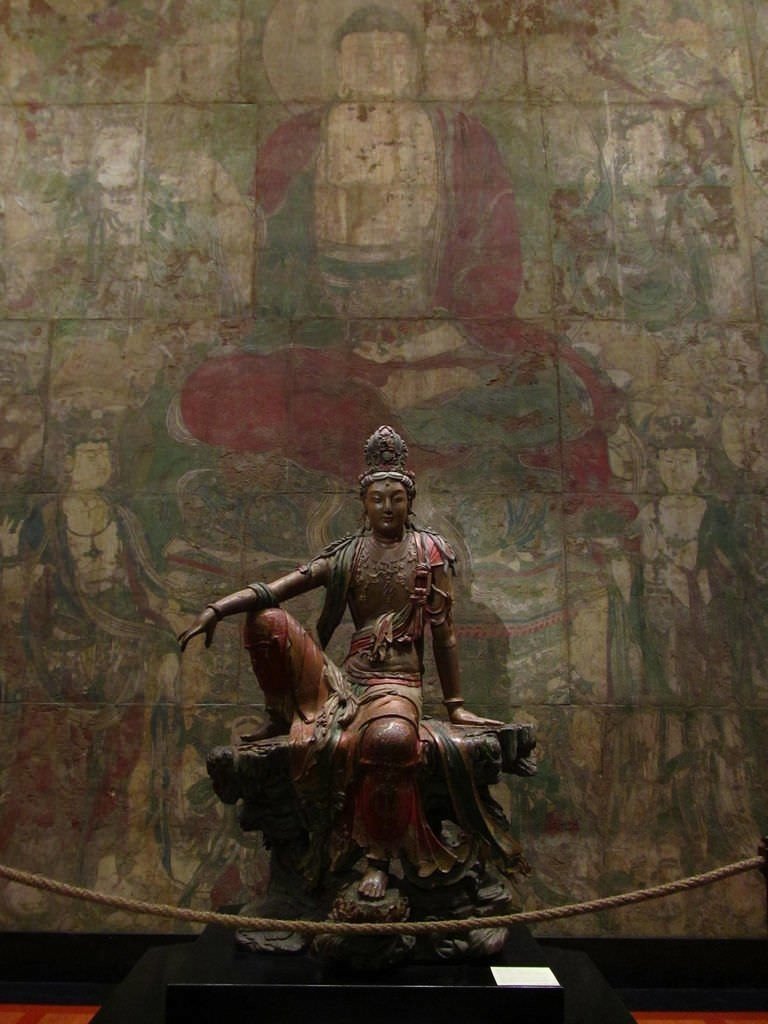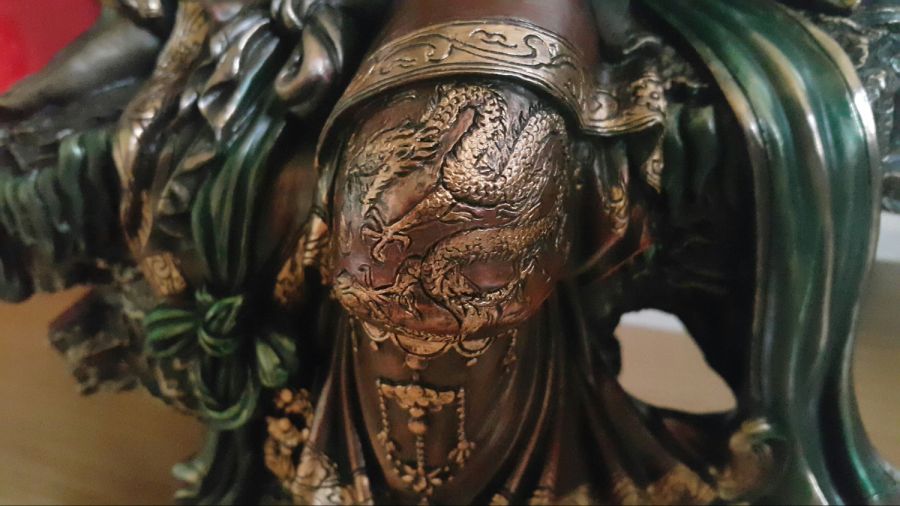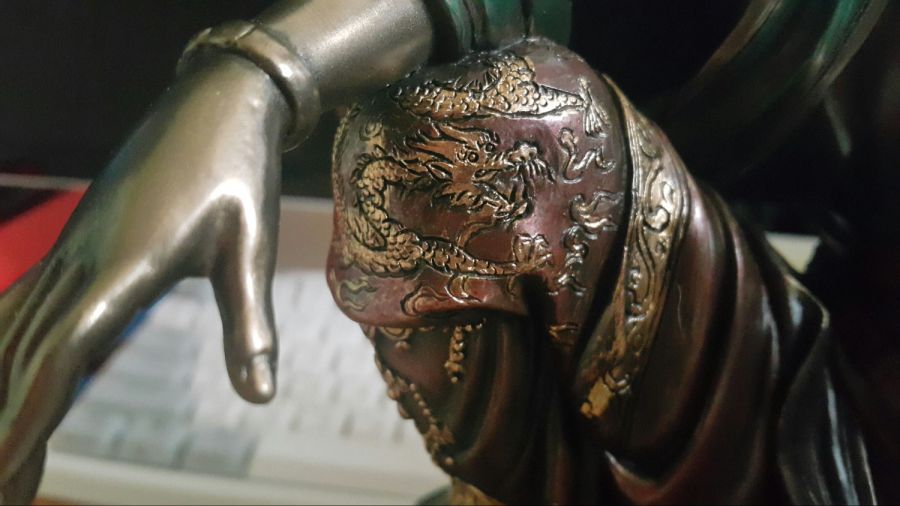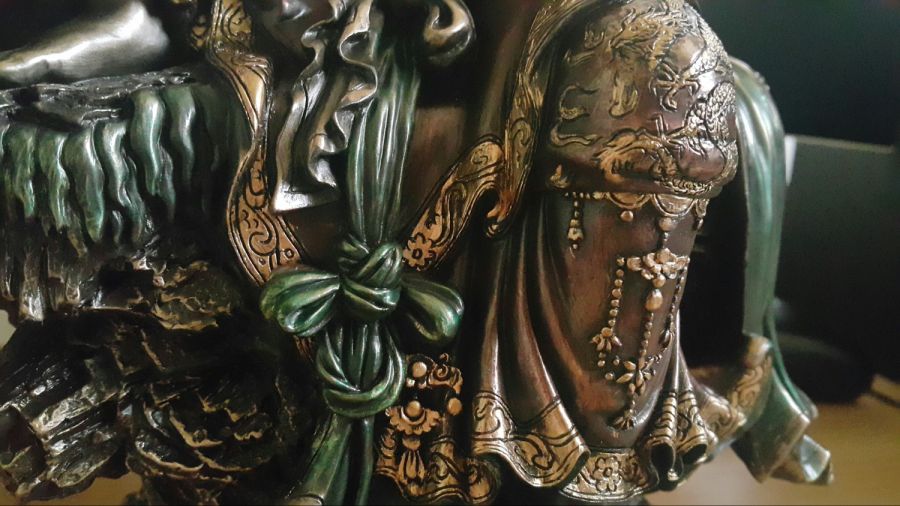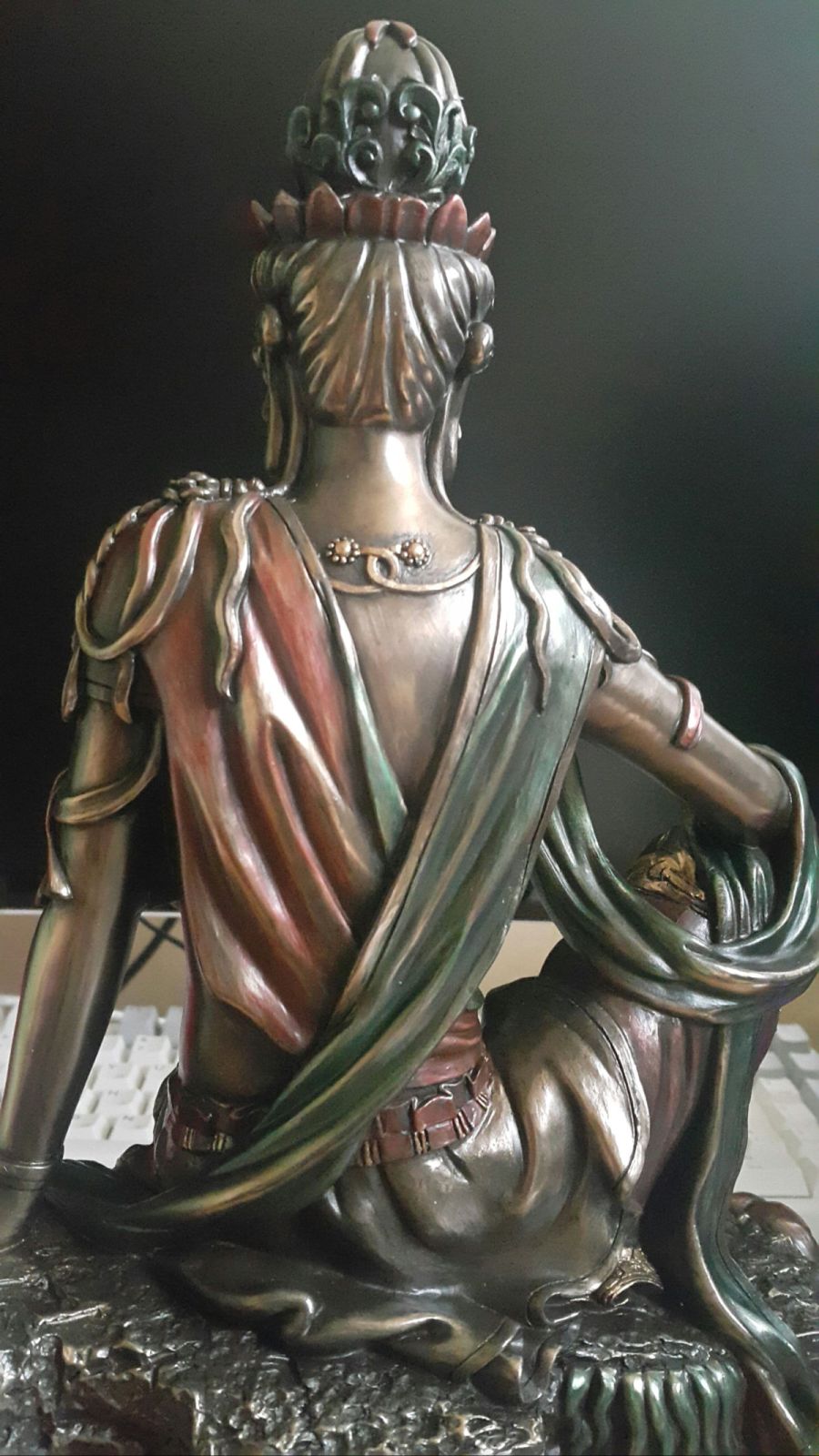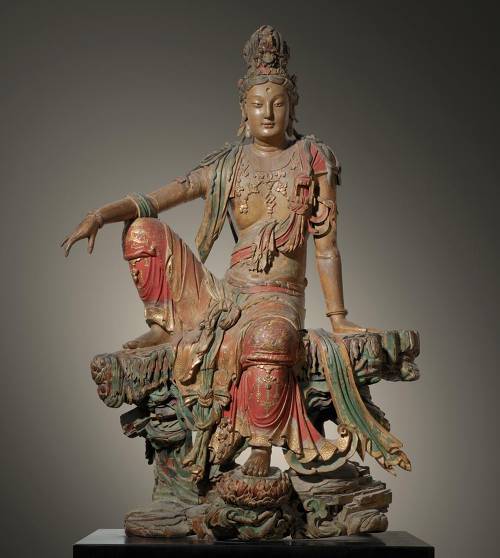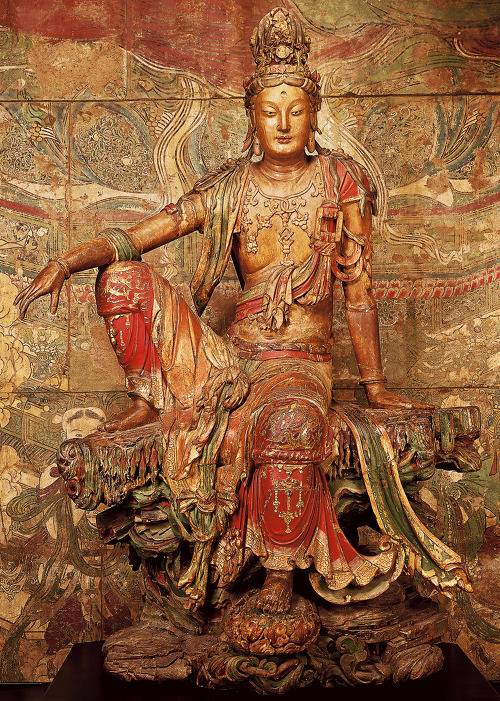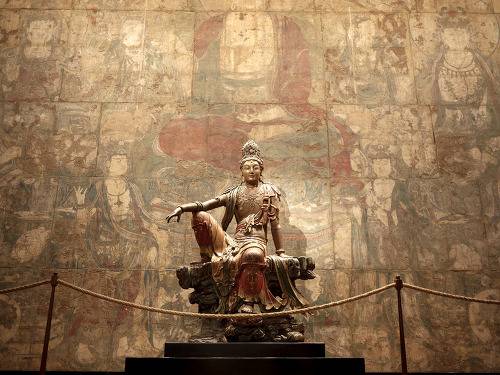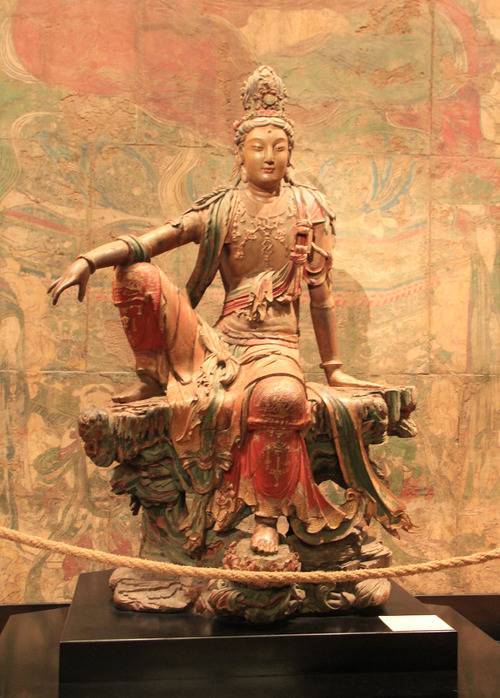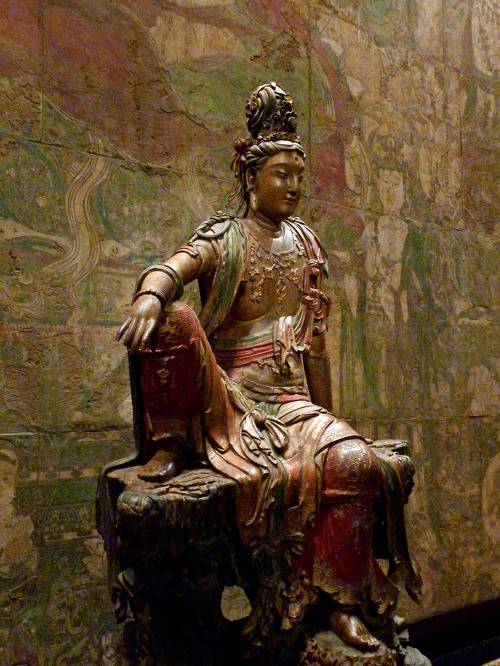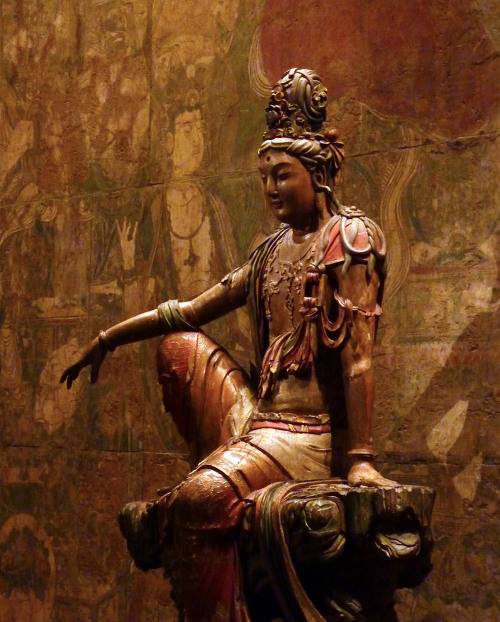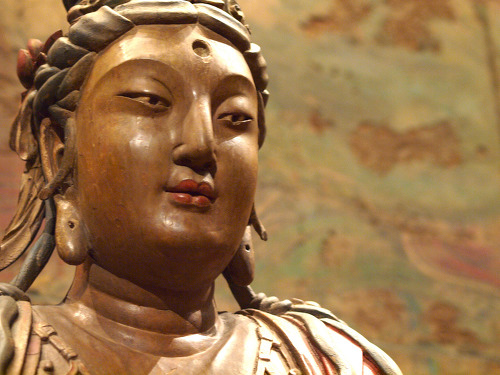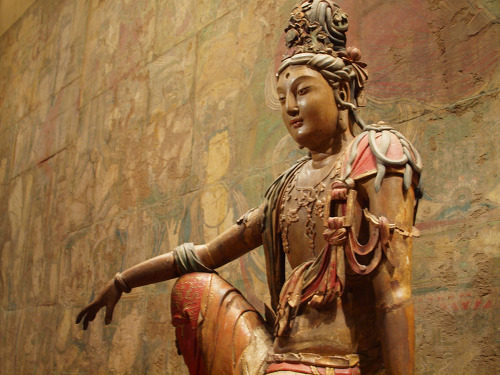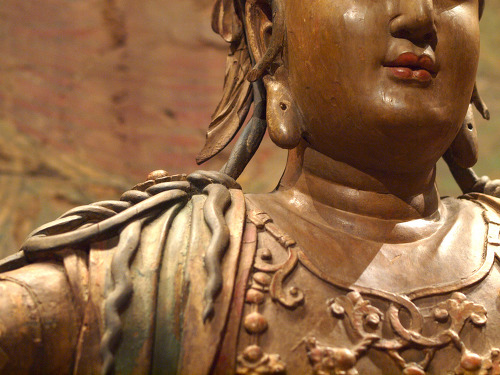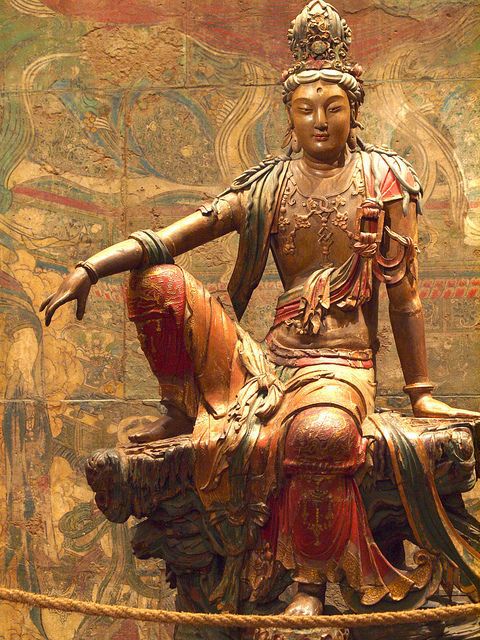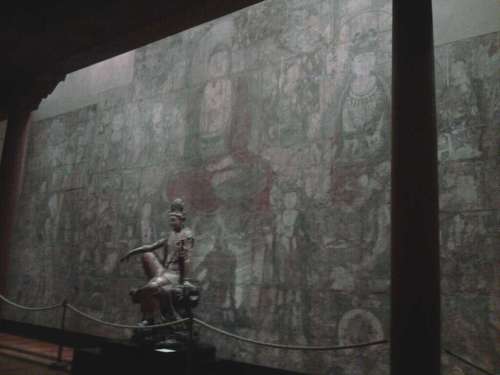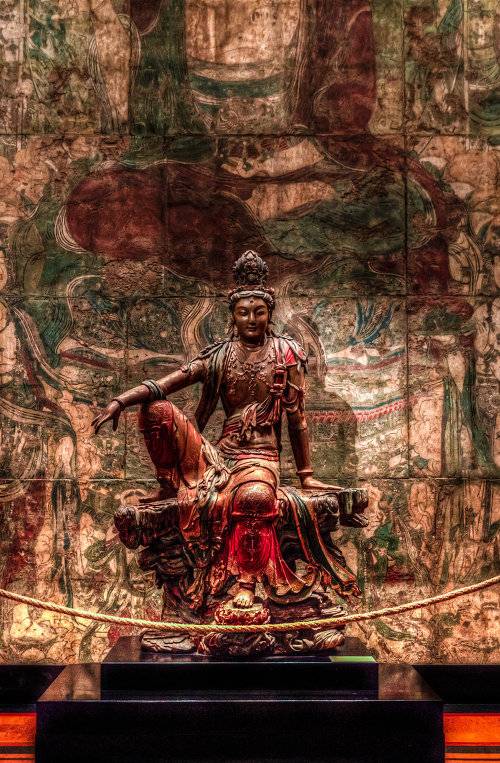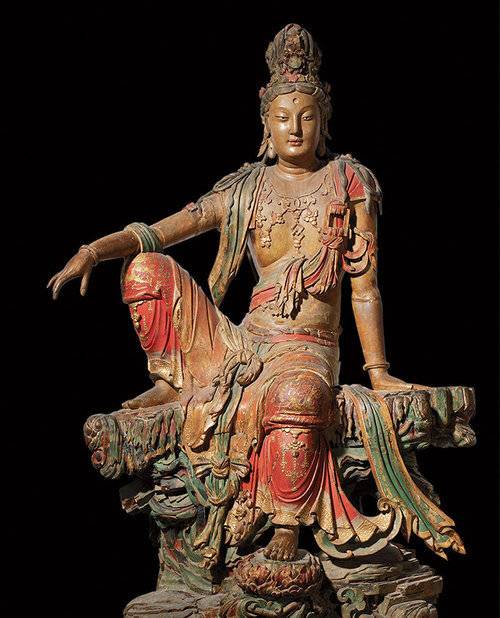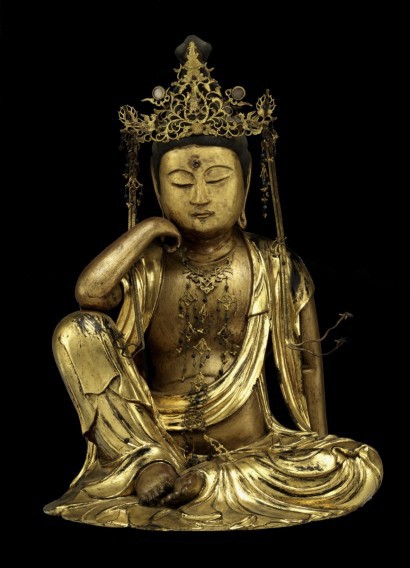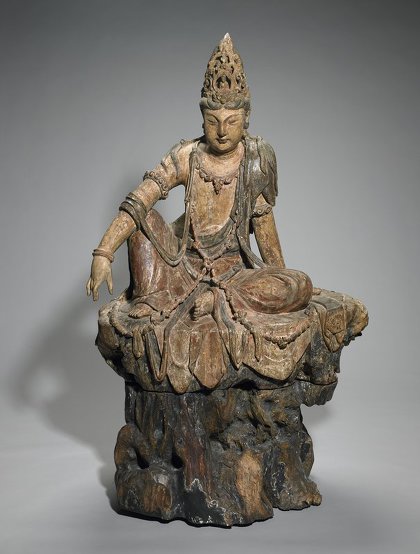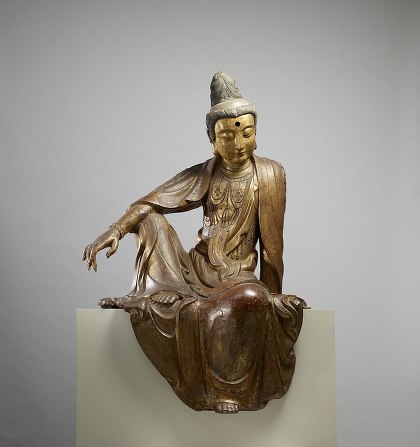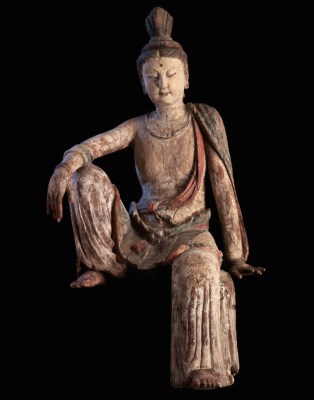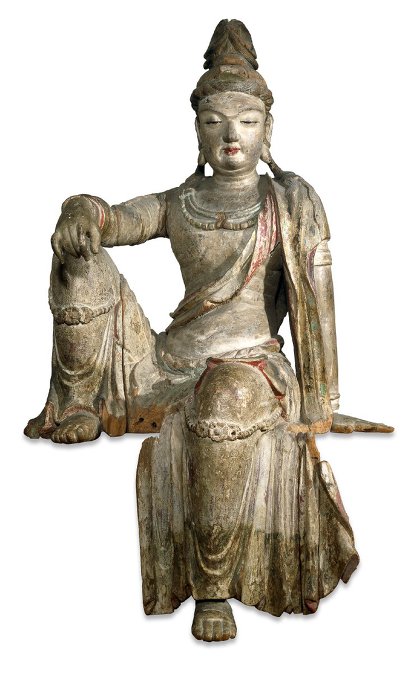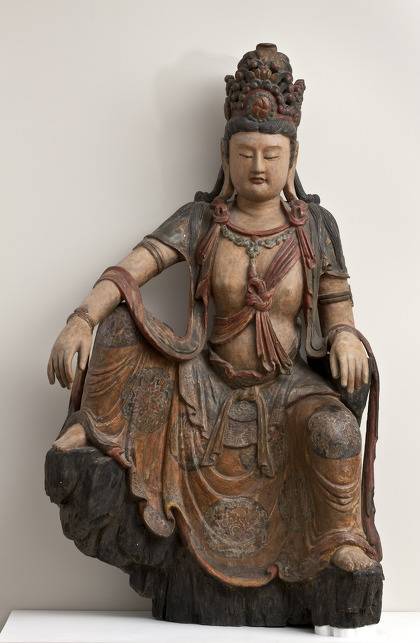[레진] 힙하게 중생 구제하는 남해의 관음상 스태츄입니다 [58]
이건 어디다 올려야되나 싶어서 고민하긴 했는데 나름 피규어(?)니까 여기 올려봅니다
인터넷에 종종 올라와서 보신 분도 많을 겁니다
중생 구제를 아주 힙하게 할 것 같은 관세음보살이지요
여유있는 자세와 스타일있는 복장, 무엇보다 모든 걸 알고 있는 듯한 옅은 미소의 표정에서 나오는 아우라가 인상적인 목조상입니다
저번에 보고 스태츄 같은거 파나 싶어서 찾아봤는데 아마존에 물건이 있더라구요
남은 재고도 얼마 없길래 구매했습니다
흔히 수월관음상이라고 불리던데 정확히는 Guanyin of the Southern Sea 남해의 관음이라 불립니다
박물관 홈페이지의 설명을 보면 이전에는 수월관음상으로 불린 것 같은데 물과 달이 없어 이름이 바뀐 듯 합니다
요나라와 금나라 시기에 만들어진 것으로 추정하고 있으며 현재 미국의 넬슨 앳킨스 미술관에 전시되어 있습니다
원본과 비교하면 당연히 디테일은 떨어지지만 나름 특징적인 부분은 구현해놨습니다
옷 매무새나 바지쪽 용 각인이라던지 그외 장신구들이 표현되어 있습니다
사진은 좀 밝게 나오는데 실제로는 색이 어두우면서도 진하게 되어 있습니다
소재는 레진으로 만들고 동으로 마감했다고 소개되어 있습니다
길이는 성인 남성 두 뺌 약간 안되는 정도로 상당히 큽니다
아쉬운건 얼굴인데 원본은 상당히 인자하면서도 생기도는 얼굴이지만 스태츄에선 동그란 얼굴이 약간 타원형이 되었고
눈동자 묘사가 없어서인지 표정이 약간 차가워보입니다
전혀 안닮은것 같은데 보고 있으면 조금은 닮은 그런 모양입니다
아까 말한 특징될만한 부분은 나름 묘사를 해놨습니다
용이 그려져있지 않고 음각으로 파놔서 생각보다 디테일합니다
미술관에 전시된 원본은 뒷판 사진이 없어서 뒷판이 궁금했는데 이렇게 되어 있나봅니다
잘 안보이는 부분이라도 옷 주름을 묘사해놨네요
카피를 꽤 정성들여한 흔적이 보입니다
아 근데 불교 안믿습니다


